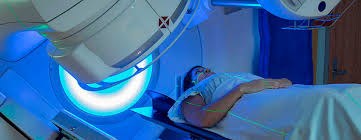Understanding Radiation Therapy: A Comprehensive Guide
Radiation therapy is a common and effective treatment for various types of cancer. It uses high-energy radiation to target and destroy cancer cells. Radiation therapy can be used alone or in combination with other cancer treatments, such as surgery and chemotherapy.
Basics of Radiation Therapy
Radiation therapy works by damaging the DNA of cancer cells. This prevents the cells from multiplying and growing. Radiation therapy is carefully planned to minimize damage to healthy cells surrounding the tumor.
Types of Radiation Therapy
There are two main types of radiation therapy: photon radiation and particle radiation.
- Photon radiation uses X-rays or gamma rays to kill cancer cells. Photon radiation is the most common type of radiation therapy.
- Particle radiation uses protons or carbon ions to kill cancer cells. Particle radiation is more precise than photon radiation and may be beneficial for certain cases.
Planning and Delivery of Radiation Therapy
The planning of radiation therapy involves simulation, imaging, and target delineation. Simulation is a process of creating a 3D model of the tumor. Imaging is used to determine the location of the tumor and the surrounding healthy tissues. Target delineation is the process of identifying the exact area of the tumor to be treated.
The delivery of radiation therapy can be done in two ways: external beam radiation therapy and internal radiation therapy.
- External beam radiation therapy uses a machine to deliver radiation to the tumor from outside the body.
- Internal radiation therapy uses radioactive seeds or capsules to deliver radiation directly to the tumor.
Techniques and Advanced Approaches
There are several techniques and advanced approaches that can be used to improve the effectiveness of radiation therapy.
- Intensity-modulated radiation therapy (IMRT) uses computer-controlled beams to deliver radiation in a precise way. This helps to spare healthy tissues from damage.
- Image-guided radiation therapy (IGRT) uses real-time imaging to guide the delivery of radiation. This helps to ensure that the radiation is delivered accurately.
- Stereotactic radiosurgery (SRS) and stereotactic body radiation therapy (SBRT) are highly focused techniques that can be used to treat small tumors or lesions.
Side Effects and Management
Side effects may occur during radiation therapy but are typically temporary and manageable. Common side effects include fatigue, skin reactions, and temporary hair loss. Healthcare providers can offer supportive care and symptom management strategies to minimize side effects.
Recent Advances and Research
There are several recent advances and research in radiation therapy. These include:
- Adaptive radiation therapy: This technique allows for changes to the radiation treatment plan during treatment, based on the patient's response.
- Hypofractionated radiation therapy: This technique uses fewer radiation treatments than traditional radiation therapy.
- Immunoradiation: This technique combines radiation therapy with immunotherapy, which helps to boost the immune system's ability to fight cancer.
Conclusion
Radiation therapy is a vital treatment option for cancer patients, offering precise targeting and effective tumor control. Consult with your healthcare provider to learn more about radiation therapy and its potential role in your cancer treatment.
If you have any questions or would like personalized medical advice regarding radiation therapy, please feel free to contact Dr Madhuri at Apollo Cancer Institute, Jubilee Hills. We are here to support you throughout your cancer journey.
Note: This article serves as an educational resource and should not replace professional medical advice. Consult with a qualified healthcare provider for personalized information and recommendations regarding Radiation Therapy.
